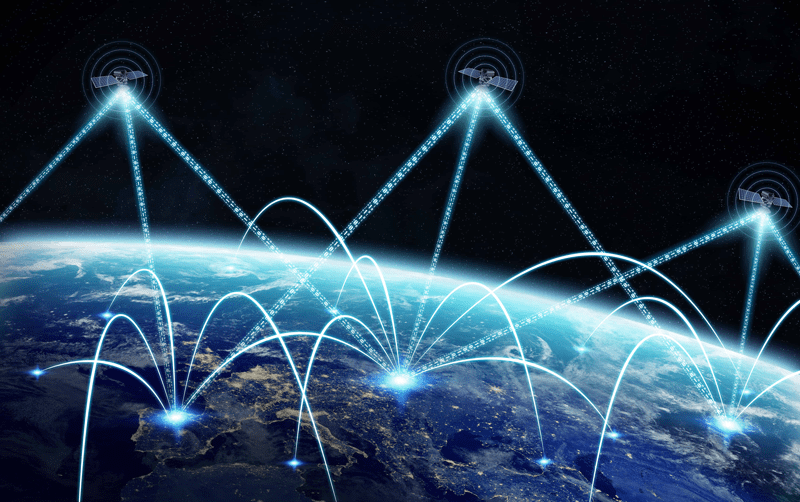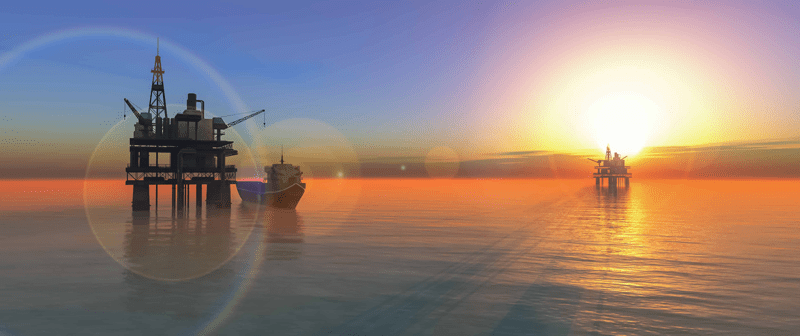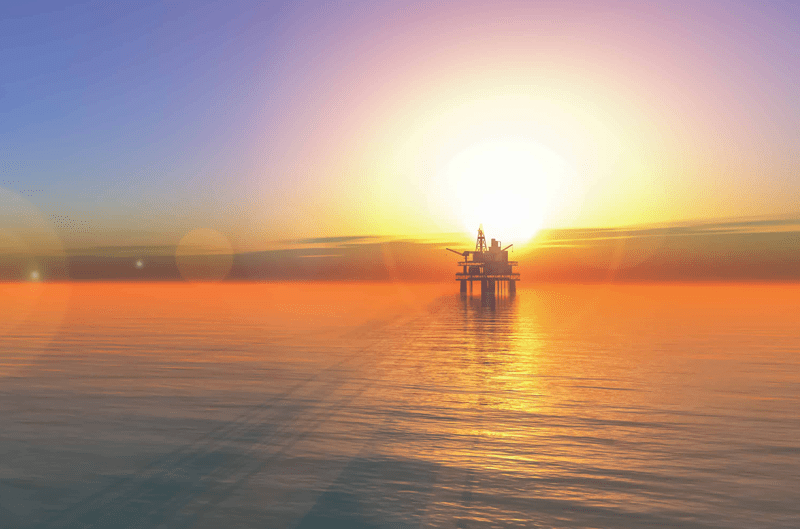The oil and gas sector is at the forefront of connective technology, yet rigs are in dire need of a connectivity revolution. In envisioning the oil rigs of the future, top on the list must be the ability to connect to high-speed, reliable internet, unlocking a myriad of benefits.
The oil and gas sector has reached a critical juncture. The balance between risk and reward is ever-present and technology, particularly automation, stands as a catalyst for safer drilling practices and an improved bottom line. The question becomes: What does the rig of the future look like? Is full autonomy achievable, or are we heading toward a model akin to an F1 team, with a pit crew on the track and a data team back at base?
Connectivity as Enabler
Imagine a rig where fast networks enable seamless data transfer and management, and foster more informed and faster decision-making. Connectivity would be at the forefront, not just for operational efficiency, but also to enhance crew welfare and wellbeing.
Currently, connectivity can act as a bottleneck for innovation. However, the good news is this is changing rapidly with new connected technologies, making connectivity an enabler for all rigs. While some assets may already be fully autonomous, others still require human intervention, but regardless, connectivity can streamline maintenance and monitoring, improving operations, efficiency and safety.

Low-Earth Orbit (LEO) Multipath Connectivity
The mention of Low-Earth Orbit (LEO) satellite networks might have drawn blank stares a few years ago but, today, a seismic shift is occurring in the satellite communications landscape. Unlike traditional geostationary satellites, which orbit at much higher altitudes, LEO satellites orbit close to Earth’s surface, significantly reducing the delay in transfer time for the data to travel from the rig to the satellite, known as latency. A low latency is especially critical for applications that require real-time communication, such as video conferencing and cloud-based data uploads.
Starlink and OneWeb are two prominent companies that are working on building satellite internet constellations to provide global broadband internet access, both with constellations of hundreds of satellites orbiting above us. LEO users can now expect download speeds of up to 220 Mbps at sea, enabling remote working, monitoring, and high-quality video calls back to shore.

Benefits for the Rig
Compared to traditional Very Small Aperture Terminals (VSAT), LEO Multipath connectivity offers higher capacity, faster data and smaller antennas. The benefits of connected technology extend beyond efficiency to upstream operations, focusing on safety, efficiency and reliability, operating 24/7 to predict and prevent failures.
At Clarus Networks, we are pursuing cutting-edge connectivity solutions, and championing the utilization of LEO multipath connectivity. In today’s hyper-connected world, where every millisecond counts, having a resilient and robust connectivity solution is non-negotiable. Even though Starlink has proven to be highly reliable, some organizations still require a secondary connection due to critical communication needs. In such instances, the conventional wisdom might point toward supplementing with a VSAT system. However, the smarter, more future-proof alternative is to employ a multipath connectivity strategy with both Starlink and OneWeb. Coupled with specialized high-performance antennas designed to withstand extreme temperature and weather conditions, this ensures connectivity even in the most remote and challenging environments, ensuring that mission-critical communications are never interrupted.

The majority of our offshore customers cite crew welfare as a key reason for installing better connectivity. The benefits are easy to imagine: A connected crew can call loved ones back on land without restriction or stream high quality entertainment, improving morale while working away.
However, the industry is shifting toward operational efficiency as a key driver for connectivity. The rig of the future will be smart, data-driven, with an “internet of things” continuously reporting and communicating. As sustainability gains traction, better connectivity emerges as a tool for reducing carbon emissions, supporting more sustainable operations.
Managing Connected Tech Integration
Having installed Starlink on many rigs globally, we are seeing outstanding results. This experience gives us real insights into how offshore companies can best manage the integration of connected tech. Establishing a base infrastructure that meets minimum requirements, identifying applications for enhancement, ensuring scalability, and prioritizing operations that make the most significant difference to business operations are critical steps.
Integrating faster connectivity with older infrastructure isn’t always simple. If you’re considering updates to a rig, remember that the smartest investments aren’t always what has worked before, but in what will work best moving forward. Adherence to the past neglects the rapid advancements we’re witnessing in LEO networks, and technology needs to be future-proof. However, for some, complete removal of VSAT may be a step too far and, in this case, LEO can provide industry-leading service level agreements for bandwidth, latency, and availability, improving reliability and speed, with older VSAT technology still onboard. LEO systems are much easier to install compared to older infrastructure, with potential for massive improvements with minimal downtime.
 Global Connectivity Landscape
Global Connectivity Landscape
A global perspective on connectivity showcases the dominance of two key players. Starlink, spearheaded by SpaceX, boasts over 4,000 active satellites and offers global coverage for maritime, including poles. OneWeb, in collaboration with Eutelsat, has launched 648 satellites, covering the North Sea and Northern Atlantic, with plans for global coverage by Q1 2024.
Delving into the specifics, Starlink Maritime offers download speeds of 220 Mbps per terminal, with less than 99 ms latency and no service level agreement. OneWeb, with 200 Mbps download, 20 Mbps upload, and less than 150 ms latency, provides a 99.95 percent uptime service level agreement. The competitive landscape between these two giants is shaping the future of offshore connectivity.
As we navigate the future of offshore energy connectivity, it’s clear that autonomy and connectivity are intertwined. The rig of the future is not merely a standalone platform; it’s a connected, intelligent ecosystem where technology augments human capabilities. As Director of Maritime & Energy at The Clarus Networks Group, I see a future where risk is minimized, efficiency is maximized, and our industry embraces the transformative power of connectivity. From the office to the ocean, the journey has just begun, and the horizon is brimming with possibilities. In embracing the full spectrum of technological advancements, we lay the foundation for a resilient and connected offshore energy sector, where every byte of data contributes to a safer, more efficient, and sustainable future.

Chris Schonhut, Director of Maritime & Energy, The Clarus Networks Group, is an accomplished and visionary leader in the global maritime and offshore energy sector, with wide ranging experience driving strategic initiatives, fostering industry partnerships and spearheading innovative solutions.
With a background in maritime connectivity and management, Schonhut’s career trajectory has included working with leading maritime corporations and energy firms. Schonhut successfully navigates the complexities of fully optimized, multimillion-dollar operational connectivity and IT projects in challenging marine environments, using expertise in risk management and compliance.
At Clarus, Schonhut takes pride in connecting the unconnected through the orchestration of large-scale maritime and offshore energy solutions. Driven by a steadfast commitment to leveraging technology and sustainable practices, Schonhut is shaping the future of maritime and offshore energy connectivity by collaborating with industry leaders to deliver high-speed internet everywhere, for everyone.
Oil and gas operations are commonly found in remote locations far from company headquarters. Now, it's possible to monitor pump operations, collate and analyze seismic data, and track employees around the world from almost anywhere. Whether employees are in the office or in the field, the internet and related applications enable a greater multidirectional flow of information – and control – than ever before.




